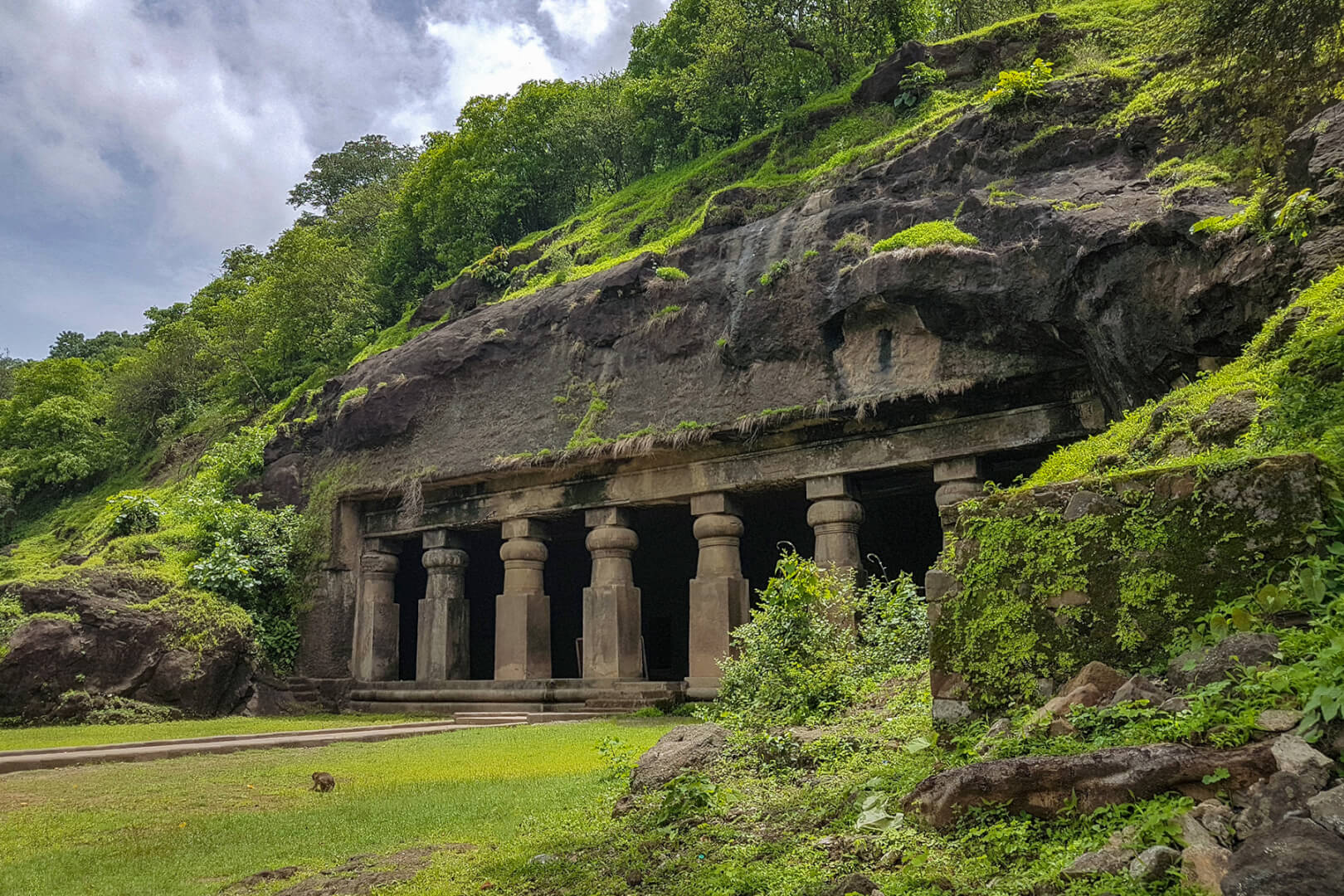- 162 Kms
3 / 5
- Reviews (0)
Location: Near Mumbai
Located on Elephanta Island near Mumbai, Elephanta Caves are a UNESCO World Heritage Site comprising ancient rock-cut caves, predominantly dedicated to the Hindu god Shiva.
Info
The Elephanta Caves are a network of sculpted caves located on the Elephanta Island in Mumbai Harbour . Elephant island is also called Gharapuri, meaning “the city of caves”) i. It is 10 kilometres (6.2 mi) to the east of Mumbai. The island, located in the Arabian Sea, consists of two groups of caves—the first is a large group of five Hindu caves, and the other is a smaller group of two Buddhist caves. The Hindu caves contain rock cut stone sculptures, representing the Shaiva Hindu sect, dedicated to Lord Shiva.
The rock cut architecture of the caves has been dated to between the 5th and 8th centuries. The identity of the original builders is still a subject of debate. The caves are hewn from solid basalt rock. All the caves were also originally painted in the past, but now only traces remain.
The island was a Hindu place of worship until Portuguese rule began in 1534. The Portuguese called the island Elephanta on seeing its huge gigantic statue of an Elephant at the entrance. The Statue is now placed at the Jijamata Udyaan at Byculla in Mumbai. This cave was renovated in the 1970s and was designated a UNESCO World Heritage Site in 1987 to preserve the artwork. It is currently maintained by the Archaeological Survey of India (ASI).
The caves house the following sculptures-
- Main Hall
1. Ravana lifting Kailash
2. Shiva-Parvati on Kailash
3. Ardhanarishvara
4. Trimurti
5. Gangadhara
6. Wedding of Shiva
7. Shiva slaying Andhaka
8. Nataraja
9. Yogishvara
10. Linga - East Wing Shrine
11. Kartikeya
12. Matrikas
13. Ganesha
14. Dvarapala - West Wing Shrine
15. Yogishvara
16. Nataraja
- Other caves :
There is a second excavation to the south east of the great caves. It has a chapel at the north end. The front of this cave is completely destroyed, and only fragments of some semi-columns remain. The interior has suffered water damage. At the back are three chambers- the central one has an altar and a water channel (pranalika), though the Linga is lost. The shrine door has some traces of sculpture. The door-keepers of the shrine are now in fragments.
A little to the south of the last cave, is another cave which has also suffered water damage. South of this cave is a cavern, which may be used as a cistern.Above these caves is a tiger sculpture, which was worshipped as the tiger goddess Vaghesheri.
Across the top of the ravine from Cave 1 is large hall known as Sitabai’s Temple (cave). The shrine has an altar, a water channel, and hole in the center, in which a statue of Parvati may have been worshipped.
Passing along the face of the eastern hill to the north of Sitabai’s cave is a small Hindu excavation with a veranda. At the end of the north spur of the main hill is a mound that resembles a Buddhist stupa.
It seems, different dynasties held their sway over this island, namely, the Konkan-Mauryas, Trikutakas, Chalukyas of Badami, Silaharas, Rashtrakutas, Kalyani Chalukyas, Yadavas of Deogiri, Muslim rulers of Ahmedabad and then by the Portuguese. The Marathas too had this island under their control and from them it went under the control of the British.
- Elephanta island :
This island is a popular tourist destination because of the island’s cave temples, that have been carved out of rock.
The island is easily accessible by ferry from Mumbai. Boats leave daily from the Gateway of India, take about an hour each way. The tickets for these can be bought at the Gateway itself. The first ferry leaves at 9 am, the last at 2 pm. From where the boat lands on the island, a walkway leads to steps that go up to the famous caves. The caves are open to public from 9 am to 5 pm. It is closed on Mondays.
There is also a narrow-gauge toy train from the boat area on the dock to the base of the steps leading up to the caves (about 600 meters). Along the path, you will find hawkers sell souvenirs like necklaces, anklets, showpieces and keychains. There are also some stalls to buy food and drinks.
The larger group of caves, which consists of five caves on the western hill of the island, is well known for its Hindu sculptures. The primary cave numbered as Cave 1, is situated about 1.6 km up a hillside, facing the ocean. It is a rock cut temple complex covering an area of 60,000 square feet. It consists of a main chamber, two lateral chambers, courtyards, and subsidiary shrines. The temple complex is the abode of Shiva.
On the eastern part of the island, on the Stupa Hill, there is a small group of caves that with Buddhist monuments. This hill is named after the religious Stupa monument that they display.
Map
Rent a Car

















